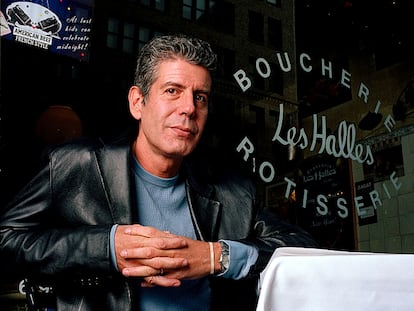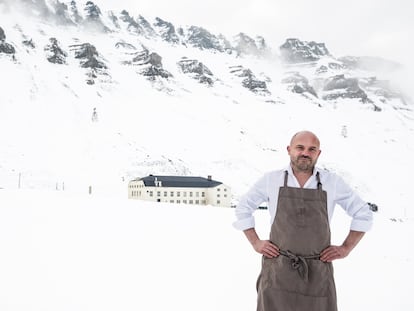This is Central, the Peruvian restaurant chosen as the best in the world
Led by Virgilio Martínez and Pía León, it offers high-altitude cuisine and a journey through the unknown ingredients of their country
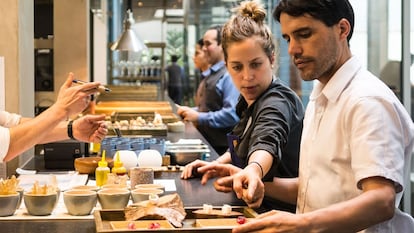
For the first time in the history of The World’s 50 Best Restaurants, the best restaurant in the world is in Latin America, a historic moment since the conception in 2002 of the always controversial list — the voting system is somewhat opaque — which has gone to different countries of the world, mainly in Europe, and once to the United States. For this edition, the one that was chosen to bear this distinction for one year was Central, in Lima, Peru.
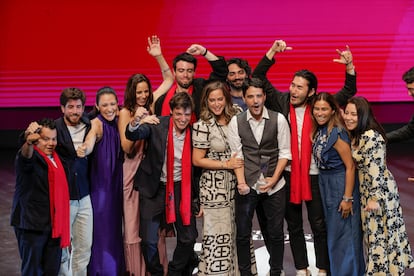
Chef Virgilio Martínez, always accompanied by his wife, the cook Pía León, took a decade to reach the top. In 2013 the restaurant was ranked 50th, making an important leap to the 15th place the following year. Since then, its rise has been unstoppable, albeit with a few puzzling setbacks: in 2015, it took the fourth position, where it remained for two years, before dropping to fifth in 2017 and sixth in 2018, where it remained until 2021, when it rose to fourth place again. Then, last year, in addition to being chosen as the best restaurant in Latin America, it was placed in the second position.
It was a dream that the couple had pursued for some time, and they worked hard to achieve it. In 2020, the Covid-19 pandemic isolated many businesses in the hospitality industry, which used to receive a good number of foreign clients, including the voters of the list produced by the British media company William Reed. Facing that situation, they put into practice the words of English philosopher Francis Bacon: “If the hill will not come to Mahomet, Mahomet will go to the hill.” Martínez and León crossed the Atlantic and toured the Iberian Peninsula, where they cooked in the homes of some chef friends and presented their gastronomic proposal. They went to Portugal, where they were received by José Avillez in the Belcanto restaurant, in Lisbon; in Barcelona, Oriol Castro, Eduard Xatruch and Mateu Casañas opened the kitchen of Disfrutar for them; and in the Spanish city of El Puerto de Santa María, Ángel León acted as their host at the Aponiente.
Getting to where they are now has not been easy. To get a sense of Martínez’s culinary concern, we need to take a look at his biography. His father was a lawyer and his mother an architect, and they wanted their son to follow a similar path. However, the boy wanted to be a professional skateboarder. He tried, but broke his collarbone. Then he started to study law, immediately seeing that it was not his thing: the idea of being locked in an office terrified him. He ran away. Although he was not passionate about cooking, he used to read books on gastronomy. He wanted to leave the country and be free, so he enrolled in Le Cordon Bleu in Ottawa, Canada. Later, he continued his studies in London. At the age of 19, the British capital opened his eyes: he worked at the Ritz Hotel, where he became familiar with the restaurant’s kitchen, until his visa expired. Disappointed, on his way back to Lima he made a stopover in New York and stayed there, working at the Lutèce restaurant, where he began to cook rice dishes with lobster, tuna millefeuille and consommé, as detailed in the book Central (Phaidon).
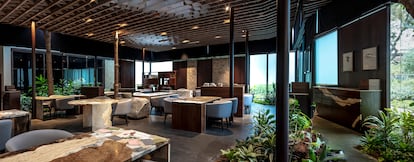
A year and a half later, his residence permit expired again, so he returned to his hometown, where he began to work with two well-known Peruvian chefs: Rafael Osterling, who prepared Asian, Mediterranean and Peruvian fusion cuisine, and Gastón Acurio, who at that time devoted his efforts to French cuisine, although little by little introducing Peruvian dishes such as lomo saltado. Martínez, impressed by the superiority of the French recipes, admits that he did not understand the cuisine of his country very well. He returned to London to work at the Four Seasons Hotel, where he felt the need to experience something new again.
This time he went to Asia, toured Thailand, did an internship at the Chinese restaurant of the Four Seasons Singapore and was impressed by the Chinese way of making dim sum, something he was not good at. That was when he began to appreciate the culinary tradition of Peru, which, on the other hand, he started to see everywhere he went. In Europe, he saw ollucos, in the United States he found quinoa, Daniel Boulud made ceviche and Raymond Blanc tiraditos. He returned to work with Gastón Acurio at Astrid y Gastón, and took part in the opening of their Madrid location. Once again, however, he felt like a fake. He was making Peruvian cuisine in Spain, where the ingredients were limited. He wanted to go to the source.
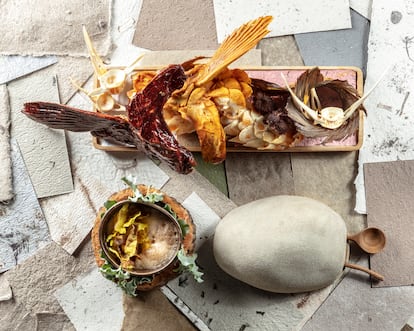
He took a sabbatical to travel around Peru, exploring the Andes in Cusco and Huaraz, the Amazon in Pucallpa and the coast around Chiclayo. He discovered ingredients he had never heard of or seen before. That was the starting point for Central, which opened in 2008 in an old house in the Miraflores district. At first — by his own admission — the result of combining European ingredients with Thai flavors resulted in “a confusing mix of flavors.” Due to problems with the opening permits, he had to close for five months; this helped him reflect and analyze what it meant to own a restaurant. Around that time he also became close to Pía León, who worked with him as an employee, but stayed by his side. Together they began to assess suppliers, producers and farmers, redesigned their website (even though their digital presentation is not their specialty) and organized the restaurant according to a hierarchy with a team that managed the information, was well guided and focused.
The next step was creating a research unit for the restaurant, Mater Iniciativa, to explore Peruvian biodiversity. When it was time to put together the menu, they put themselves in the shoes of those who visited Peru for the first time, aiming to make them traverse the territory through its cuisine. They searched for dishes by altitude, beginning their offer from sea level to the desert and valleys, until reaching the 15,000 feet of the Andes. They worked with unknown ingredients such as chaco clay and maca root. Instead of slicing truffles, they started slicing chuño, a freeze-dried potato product.
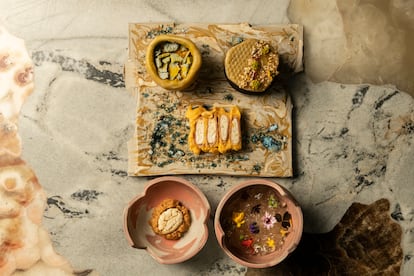
In Central’s rooftop garden, they grow oxalis tuberosa, also known as oca. Its leaves and flowers serve as decoration, but the real treasure are the roots, which are highly nutritious. The ocean has always been present too (Lima is bathed by the Pacific) in the form of ceviches. Among the rocks one can find crabs, sea spiders, red anemones and starfish, and in the water, anchovies, tuna, mackerel, horse mackerel, silverside, sole, lizas and medusafish. Also, octopus, crabs, shells and clams. Martínez and León make interpretations with all of this, creating various tasting menus. On a dish called Arañas de roca (rock spiders) they play with deep orange crabs and edible algae. They cook potato ferments from a village at 12,500 feet of altitude; tin tin, a climbing plant that grows in the Andes; ox heart, a hallmark of Peruvian identity; scallops with sweet potato roots, vegetables from the Andes and a tempura hake they call Valle sagrado (sacred valley). They also make desserts, with chaco clay from the Altiplano region.
Currently, Central offers several tasting menus: Experiencia Territorio en Desnivel and Menú Creatividad del Día, with 12 dishes each, for 1,045 Peruvian soles ($290), Experiencia Mundo Mater and Creatividad Mundo, both with 14 dishes, for 1,250 soles ($345). Wine pairings for $119 and $136. With a pairing of ferments, distillates and wines from South America, $126 and $144. The non-alcoholic experience, based on nectars, infusions and extracts with Mater products, ranges from $60 to $77.
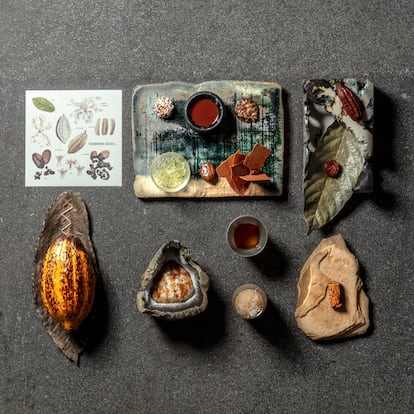
Martínez and León are also the owners of the Kjolle restaurant, in Lima, where Pía León offers an immersion in a menu based on the products of the sea, combined with others from valleys, high-altitude lakes, mountains and Amazonian forests. They also own MIL, an immersive experience ($550 dollars) with a cuisine that is aligned with the environment, offering a connection with the daily life of the peasant communities, their ancient customs and traditions, around the archaeological center of Moray.
Central
- Address: Av. Pedro de Osma 301, Barranco, Lima (Peru).
- Telephone: +51 1 242 8515
- Reservations: reservas@centralrestaurante.com.pe
- Web: centralrestaurante.com.pe
Sign up for our weekly newsletter to get more English-language news coverage from EL PAÍS USA Edition
Tu suscripción se está usando en otro dispositivo
¿Quieres añadir otro usuario a tu suscripción?
Si continúas leyendo en este dispositivo, no se podrá leer en el otro.
FlechaTu suscripción se está usando en otro dispositivo y solo puedes acceder a EL PAÍS desde un dispositivo a la vez.
Si quieres compartir tu cuenta, cambia tu suscripción a la modalidad Premium, así podrás añadir otro usuario. Cada uno accederá con su propia cuenta de email, lo que os permitirá personalizar vuestra experiencia en EL PAÍS.
¿Tienes una suscripción de empresa? Accede aquí para contratar más cuentas.
En el caso de no saber quién está usando tu cuenta, te recomendamos cambiar tu contraseña aquí.
Si decides continuar compartiendo tu cuenta, este mensaje se mostrará en tu dispositivo y en el de la otra persona que está usando tu cuenta de forma indefinida, afectando a tu experiencia de lectura. Puedes consultar aquí los términos y condiciones de la suscripción digital.
More information
Archived In
Últimas noticias
Most viewed
- Reinhard Genzel, Nobel laureate in physics: ‘One-minute videos will never give you the truth’
- Oona Chaplin: ‘I told James Cameron that I was living in a treehouse and starting a permaculture project with a friend’
- Pablo Escobar’s hippos: A serious environmental problem, 40 years on
- Charles Dubouloz, mountaineering star, retires at 36 with a farewell tour inspired by Walter Bonatti
- Why we lost the habit of sleeping in two segments and how that changed our sense of time

